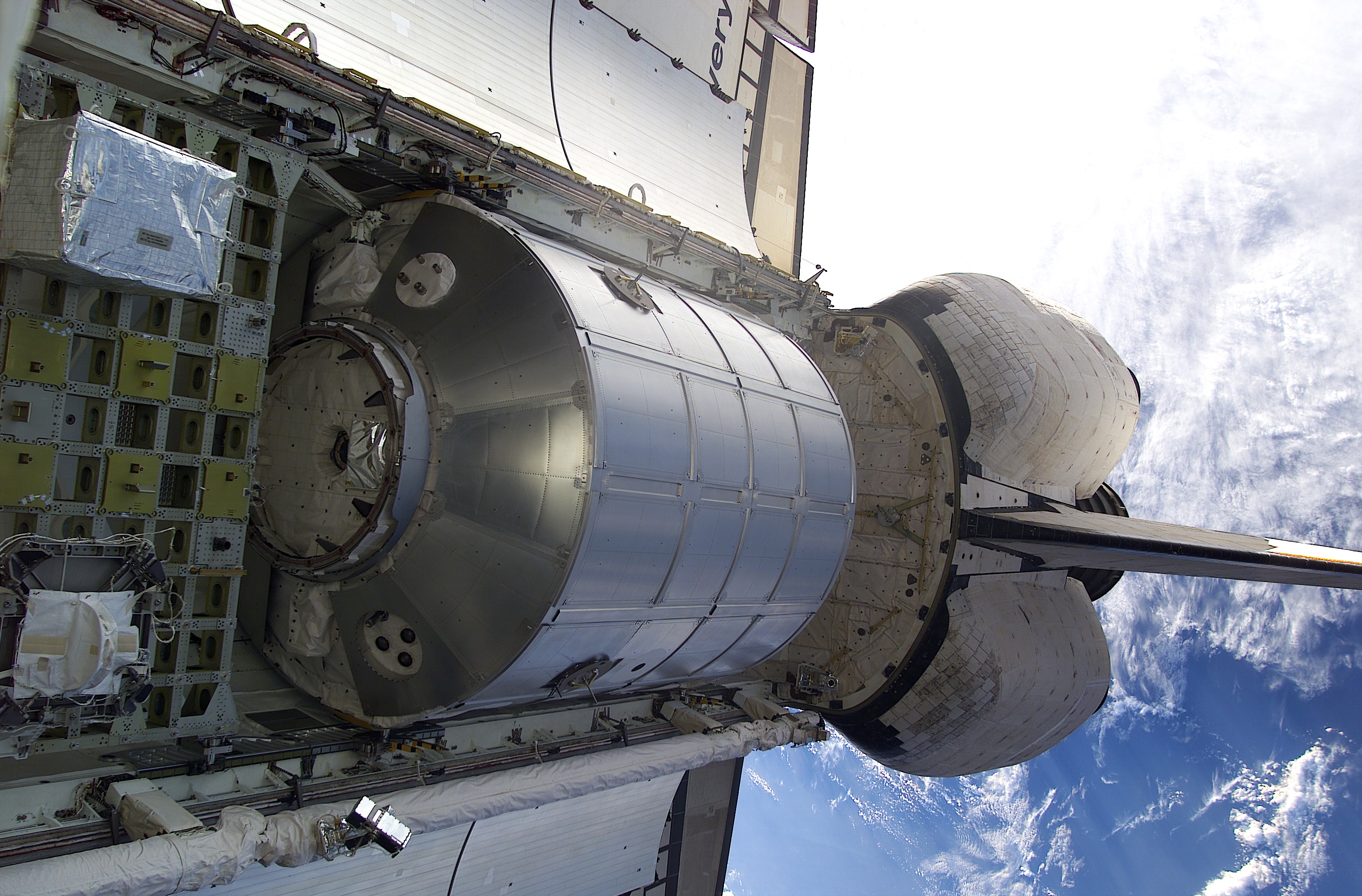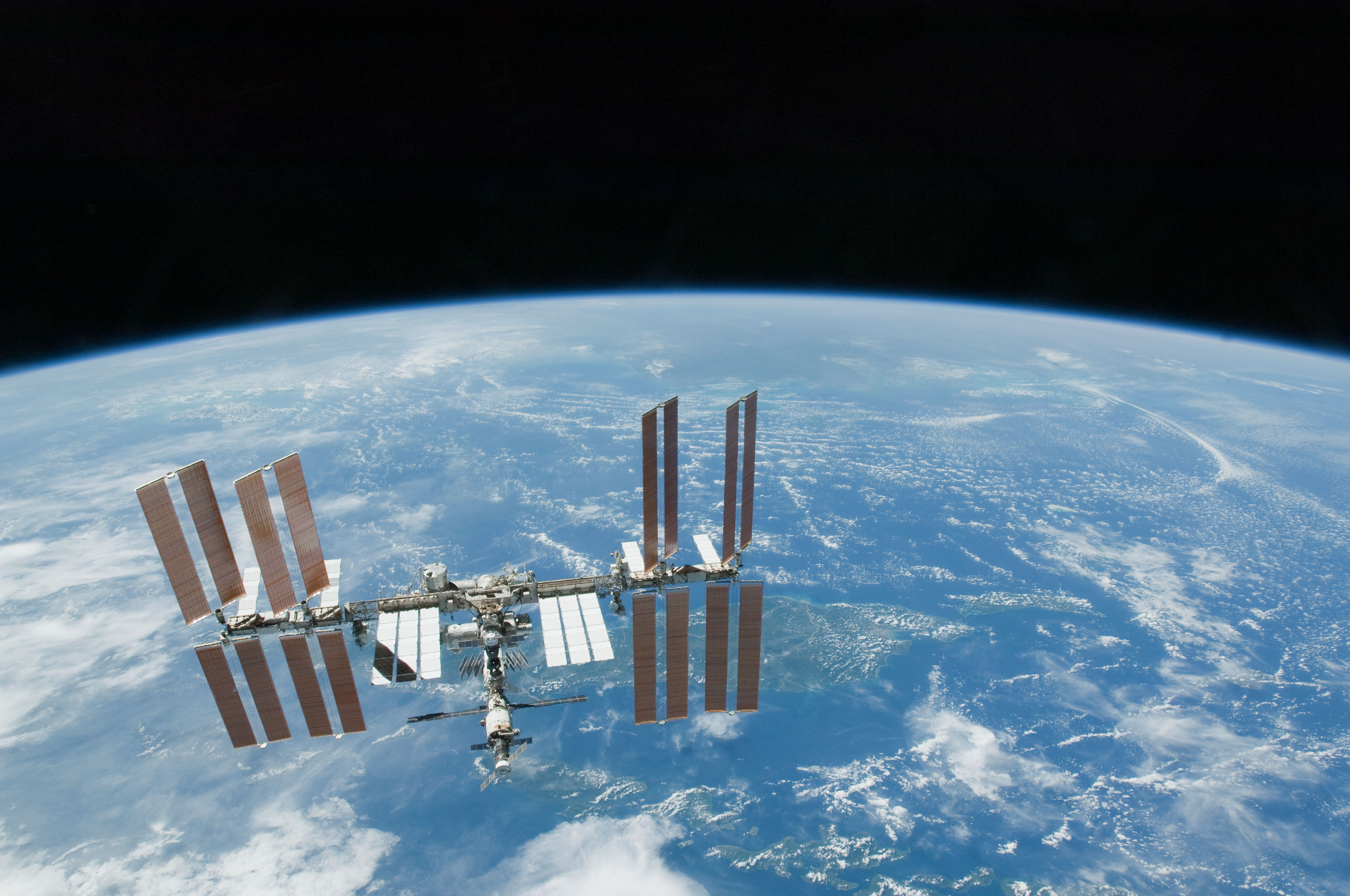|
STS-128
STS-128 ( ISS assembly flight 17A) was a NASA Space Shuttle mission to the International Space Station (ISS) that launched on August 28, 2009. carried the Multi-Purpose Logistics Module ''Leonardo'' as its primary payload. ''Leonardo'' contained a collection of experiments for studying the physics and chemistry of microgravity. Three spacewalks were carried out during the mission, which removed and replaced a materials processing experiment outside ESA's ''Columbus'' module, and returned an empty ammonia tank assembly. The mission's first launch attempt was delayed due to weather concerns, including multiple weather violations in NASA's launch rules, beginning over two hours before the scheduled launch. The second launch attempt, scheduled for August 26, 2009, at 01:10:22 EDT, was called off the previous evening due to an anomaly in one of the orbiter's fuel valves. The launch finally took place on August 28, 2009, at 23:59 EDT. ''Discovery'' landed on September 11, 2009, at Ed ... [...More Info...] [...Related Items...] OR: [Wikipedia] [Google] [Baidu] |
Nicole Stott
Nicole Marie Passonno Stott (born November 19, 1962) is an American engineer and a retired NASA astronaut. She served as a Flight Engineer on ISS Expedition 20 and Expedition 21 and was a Mission Specialist on STS-128 and STS-133. After 27 years of working at NASA, the space agency announced her retirement effective June 1, 2015. She is married to Christopher Stott, a Manx-born American space entrepreneur. Early life and education Stott was born in Albany, New York and resides in St. Petersburg, Florida. She attended St. Petersburg College studying aviation administration, graduated with a B.S. degree from Embry-Riddle Aeronautical University in 1987, and received her M.S. degree in Engineering Management from the University of Central Florida in 1992. Nicole Stott began her career in 1987 as a structural design engineer with Pratt & Whitney Government Engines in West Palm Beach, Florida. She spent a year with the Advanced Engines Group performing structural analyses of advan ... [...More Info...] [...Related Items...] OR: [Wikipedia] [Google] [Baidu] |
Christer Fuglesang
Arne Christer Fuglesang (born 18 March 1957) is a Swedish physicist and an ESA astronaut. He was first launched aboard the STS-116 Space Shuttle mission on 10 December 2006, making him the first Swedish citizen in space. Married with three children, he was a Fellow at CERN and taught mathematics at the Royal Institute of Technology before being selected to join the European Astronaut Corps in 1992. He has participated in two Space Shuttle missions and five spacewalks, and is the first person outside of the United States or Russian space programs to participate in more than three spacewalks. Early life and education Fuglesang was born in Stockholm to a Swedish mother and a Norwegian father, who became a Swedish citizen shortly before Fuglesang's birth. Fuglesang graduated from the Bromma Gymnasium, Stockholm in 1975, earned a master's degree in engineering physics from the Royal Institute of Technology (KTH), in Stockholm in 1981, and received a doctorate in experimental part ... [...More Info...] [...Related Items...] OR: [Wikipedia] [Google] [Baidu] |
STS-127
STS-127 ( ISS assembly flight 2J/A) was a NASA Space Shuttle mission to the International Space Station (ISS). It was the twenty-third flight of . The primary purpose of the STS-127 mission was to deliver and install the final two components of the Japanese Experiment Module: the Exposed Facility (JEM EF), and the Exposed Section of the Experiment Logistics Module (ELM-ES). When ''Endeavour'' docked with the ISS on this mission in July 2009, it set a record for the most humans in space at the same time in the same vehicle, the first time thirteen people have been at the station at the same time. Together they represented all ISS program partners and tied the general record of thirteen people in space with the first such occurrence of 1995. The first launch attempt, on June 13, 2009, was scrubbed due to a gaseous hydrogen leak observed during tanking. The Ground Umbilical Carrier Plate (GUCP) on the external fuel tank experienced a potentially hazardous hydrogen gas leak similar ... [...More Info...] [...Related Items...] OR: [Wikipedia] [Google] [Baidu] |
Expedition 20
Expedition 20 was the 20th long-duration flight to the International Space Station. The expedition marked the first time a six-member crew inhabited the station. Because each Soyuz-TMA spacecraft could hold only three people, two separate launches were necessary: Soyuz TMA-14 launched on 26 March 2009, and Soyuz TMA-15 followed on 27 May 2009. Soyuz TMA-15 launched from Baikonur Cosmodrome at 10:34 UTC on 27 May 2009. The vehicle docked with the station on 29 May 2009, officially changing the Soyuz TMA-14 crew from Expedition 19 to Expedition 20. Gennady Padalka was the first commander of a six-member station crew, and the first commander of two consecutive expeditions (Expedition 19 and 20). Nicole Stott was the final expedition astronaut to be launched on the shuttle. During the expedition, Koichi Wakata performed a special experiment wherein he did not change his underpants for one month, in order to test a specially-designed underwear without washing or changing; he report ... [...More Info...] [...Related Items...] OR: [Wikipedia] [Google] [Baidu] |
Multi-Purpose Logistics Module
A Multi-Purpose Logistics Module (MPLM) is a large pressurized container that was used on Space Shuttle missions to transfer cargo to and from the International Space Station (ISS). Two MPLMs made a dozen trips in the Shuttle cargo bay and initially berthed to the ''Unity'' module and later the ''Harmony'' module on the ISS. From there, supplies were offloaded, and finished experiments and waste were reloaded. The MPLM was then reberthed in the Shuttle for return to Earth. Three modules were built by the Italian Space Agency (ASI): ''Leonardo'', ''Raffaello'', and ''Donatello''. The ''Leonardo'' module was modified in 2010 to turn it into the Permanent Multipurpose Module (PMM) and was permanently attached to the ISS during the STS-133 mission in March 2011. In July 2011, the ''Raffaello'' module was the primary payload on the final Space Shuttle mission. It returned with the Shuttle and was stored at the Kennedy Space Center. The ''Donatello'' module never launched. MP ... [...More Info...] [...Related Items...] OR: [Wikipedia] [Google] [Baidu] |
Edwards Air Force Base
Edwards Air Force Base (AFB) is a United States Air Force installation in California. Most of the base sits in Kern County, but its eastern end is in San Bernardino County and a southern arm is in Los Angeles County. The hub of the base is Edwards, California. The base was named after World War II USAAF veteran and test pilot Capt. Glen Edwards in 1950; prior to then the facility was named Muroc Air Force Base. It is the home of the Air Force Test Center, Air Force Test Pilot School, and NASA's Armstrong Flight Research Center. It is the Air Force Materiel Command center for conducting and supporting research and development of flight, as well as testing and evaluating aerospace systems from concept to combat. It also hosts many test activities conducted by America's commercial aerospace industry. Notable occurrences at Edwards include Chuck Yeager's flight that broke the sound barrier in the Bell X-1, test flights of the North American X-15, the first landings of the S ... [...More Info...] [...Related Items...] OR: [Wikipedia] [Google] [Baidu] |
International Space Station
The International Space Station (ISS) is the largest modular space station currently in low Earth orbit. It is a multinational collaborative project involving five participating space agencies: NASA (United States), Roscosmos (Russia), JAXA (Japan), ESA (Europe), and CSA (Canada). The ownership and use of the space station is established by intergovernmental treaties and agreements. The station serves as a microgravity and space environment research laboratory in which scientific research is conducted in astrobiology, astronomy, meteorology, physics, and other fields. The ISS is suited for testing the spacecraft systems and equipment required for possible future long-duration missions to the Moon and Mars. The ISS programme evolved from the Space Station ''Freedom'', a 1984 American proposal to construct a permanently crewed Earth-orbiting station, and the contemporaneous Soviet/Russian '' Mir-2'' proposal from 1976 with similar aims. The ISS is the ninth space station to ... [...More Info...] [...Related Items...] OR: [Wikipedia] [Google] [Baidu] |
STS-129
STS-129 ( ISS assembly flight ULF3) was a NASA Space Shuttle mission to the International Space Station (ISS). ''Atlantis'' was launched on November 16, 2009 at 14:28 EST, and landed at 09:44 EST on November 27, 2009 on runway 33 at the Kennedy Space Center's Shuttle Landing Facility. It was also the last Shuttle mission of the 2000s. STS-129 focused on staging spare components outside the station. The 11-day flight included three spacewalks. The payload bay carried two large ExPRESS Logistics Carriers holding two spare gyroscopes, two nitrogen tank assemblies, two pump modules, an ammonia tank assembly, a spare latching end effector for the station's robotic arm, a spare trailing umbilical system for the Mobile Transporter, and a high-pressure gas tank. STS-129 was the first flight of an ExPRESS Logistics Carrier. The completion of this mission left six Space Shuttle flights remaining until the end of the Space Shuttle program, after STS-135 was approved in February 2011. Cr ... [...More Info...] [...Related Items...] OR: [Wikipedia] [Google] [Baidu] |
Microgravity
The term micro-g environment (also μg, often referred to by the term microgravity) is more or less synonymous with the terms ''weightlessness'' and ''zero-g'', but emphasising that g-forces are never exactly zero—just very small (on the International Space Station (ISS), for example, the small g-forces come from tidal effects, gravity from objects other than the Earth, such as astronauts, the spacecraft, and the Sun, air resistance, and astronaut movements that impart momentum to the space station). The symbol for microgravity, ''μg'', was used on the insignias of Space Shuttle flights STS-87 and STS-107, because these flights were devoted to microgravity research in low Earth orbit. The most commonly known microgravity environment can be found aboard the ISS which is located in low-earth orbit at an altitude of around 400 km, orbiting Earth approximately 15 times per day in what is considered free fall. The effects of free fall also enable the creation of short-du ... [...More Info...] [...Related Items...] OR: [Wikipedia] [Google] [Baidu] |
ISS Assembly Sequence
The process of assembling the International Space Station (ISS) has been under way since the 1990s. '' Zarya'', the first ISS module, was launched by a Proton rocket on 20 November 1998. The STS-88 Space Shuttle mission followed two weeks after ''Zarya'' was launched, bringing ''Unity'', the first of three node modules, and connecting it to ''Zarya''. This bare 2-module core of the ISS remained uncrewed for the next one and a half years, until in July 2000 the Russian module '' Zvezda'' was launched by a Proton rocket, allowing a maximum crew of three astronauts or cosmonauts to be on the ISS permanently. The ISS has a pressurized volume of approximately , a mass of approximately , approximately 100 kilowatts of power output, a truss long, modules long, and a crew of seven. Building the complete station required more than 40 assembly flights. As of 2020, 36 Space Shuttle flights delivered ISS elements. Other assembly flights consisted of modules lifted by the Falcon 9, Russian ... [...More Info...] [...Related Items...] OR: [Wikipedia] [Google] [Baidu] |





